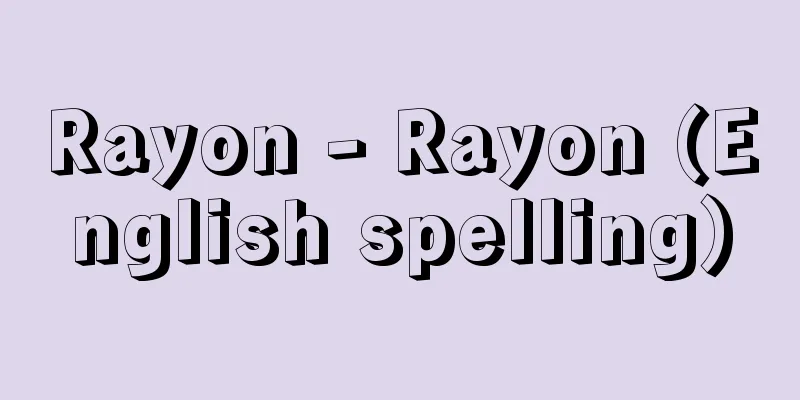Okatoyo Castle

|
A medieval mountain castle located in Nankoku City, Kochi Prefecture. It is a nationally designated historic site. During the Sengoku period, it was the castle of the Chosokabe clan, who ruled Shikoku for generations, and was built on Mt. Okoyama , 97 meters above sea level. It was composed of a main castle and two enclosures, and was a large-scale mountain castle during the Sengoku period. In the early Kamakura period, Hata Yoshitoshi from Shinano (Nagano Prefecture) moved to Sobe-go, Nagaoka County, Tosa (Okoto-cho, Nankoku City) and is said to have built Okoto Castle. This marked the beginning of the Hata clan's name as the Chosokabe clan. After the Onin War, powerful clans rose to power in Tosa, and the country entered an era of warring factions. In 1508 (Eisho 5), Okoto Castle was attacked and captured by the combined forces of powerful clans, and the castle's lord, Chosokabe Kanetsugu , committed suicide. At this time, Kanetsugu's son Kunichika fled to the Ichijo clan of Nakamura, and eventually returned to Okatoyo Castle with the help of the Ichijo clan, from which he continued to expand his influence. Kunichika's son Chosokabe Motochika expelled his master, the Ichijo clan, from Nakamura Castle in 1574 (Tensho 2) and pacified Tosa, and in 1585 (Tensho 13) unified Shikoku. However, the following year he fought against Toyotomi Hideyoshi, who had invaded Shikoku, and was defeated, leaving him with only Tosa as his territory. In 1588 (Tensho 16), he built a castle in Otakasaka (where Kochi Castle is currently located) and moved there, but due to poor flood control he returned to Okatoyo Castle. In 1591 (Tensho 19), he built a new castle, Urato Castle , and made it his base, and Okatoyo Castle was abandoned. Currently, stone walls, enclosures , earthworks, dry moats, wells, etc. remain, and the Kochi Prefectural History and Folklore Museum is located in one corner of the castle ruins. It is a 30-minute bus ride from Kochi Station on the JR Dosan Main Line, and a 10-minute walk from the School Junction. Source: Kodansha Encyclopedia of Japanese Castles Information |
|
高知県南国市にあった中世の山城(やまじろ)。国指定史跡。戦国時代、四国を制覇した長宗我部(ちょうそかべ)氏代々の居城で、標高97mの岡豊山(おこうやま)に築かれた。本城と2つの曲輪で構成され、戦国期の山城としては大規模な城郭であった。鎌倉時代初期、信濃(長野県)の秦能俊(はたよしとし)が土佐の長岡郡宗部郷(南国市岡豊町)に移り、岡豊城を築いたと伝えられている。これを機に、秦氏は長宗我部氏を名乗る。応仁の乱後、土佐は豪族が台頭し、群雄割拠の時代に入った。1508年(永正5)岡豊城は、豪族の連合軍に襲われ落城、城主の長宗我部兼序(ちょうそかべかねつぐ)は自刃して果てる。この時、兼序の子国親(くにちか)は、中村の一条氏のもとに落ち延び、やがて一条氏の取りなしで岡豊城に復帰、以後勢力を拡大していった。国親の子の長宗我部元親(ちょうそかべもとちか)は、1574年(天正2)主家の一条氏を中村城から追放して土佐を平定、さらに1585年(天正13)に四国を統一した。しかし翌年、四国に侵攻してきた豊臣秀吉と戦って敗れ、土佐一国のみの所領となった。1588年(天正16)大高坂(おおたかさ)(現在の高知城所在地)に居城を築き移ったものの、治水の悪さから岡豊城に戻る。1591年(天正19)新たに浦戸城(うらとじょう)を築城し本拠としたため、岡豊城は廃城となった。現在、石垣、曲輪(くるわ)、土塁、空堀、井戸などが残り、城跡の一角に高知県立歴史民俗資料館がある。JR土讃本線高知駅からバスで30分、学校分岐下車徒歩10分。
出典 講談社日本の城がわかる事典について 情報 |
Recommend
Gajutsu - Arts
A perennial plant of the ginger family (APG class...
Relative Salary - Aitaisumasshirei
In the Edo period, this was a law that ordered th...
Genpei Nunobiki Falls
Joruri Gidayubushi. Historical piece. Five acts. ...
Return-blooming primrose
...7 acts. Also called "Higashiyamadono Saku...
Odaka-Miyazawa debate
...At the time of its establishment, there was a ...
Polesye (English spelling)
The largest marshland in Europe, straddling both B...
Zhengzhou
A prefecture-level city in the north-central part...
Flood, Henry
[Born] 1732 [Died] December 2, 1791. Farmley, Kilk...
Michiko Kanba
1937-1960 A student activist in the late Showa pe...
Groundwater - Chikasui (English spelling)
Groundwater is water that exists underground and ...
Qiu Jun - Qiu Shun
…In the northeastern suburbs, a shrine was built ...
Collection of Tosa Province Kanji - Tosa no Kuni tokanshu
This is a chronological collection of medieval doc...
Tsuguyama Kengyo
?-1697 A koto musician from the early Edo period....
Ghāzān Khān
1271‐1304 The seventh Khan of the Ilkhanate. Great...
Song-jiang-pai
A branch of the Chinese Wu school. Because Dong Qi...








![Totsukawa [village] - Totsukawa](/upload/images/67cc588cbe098.webp)
